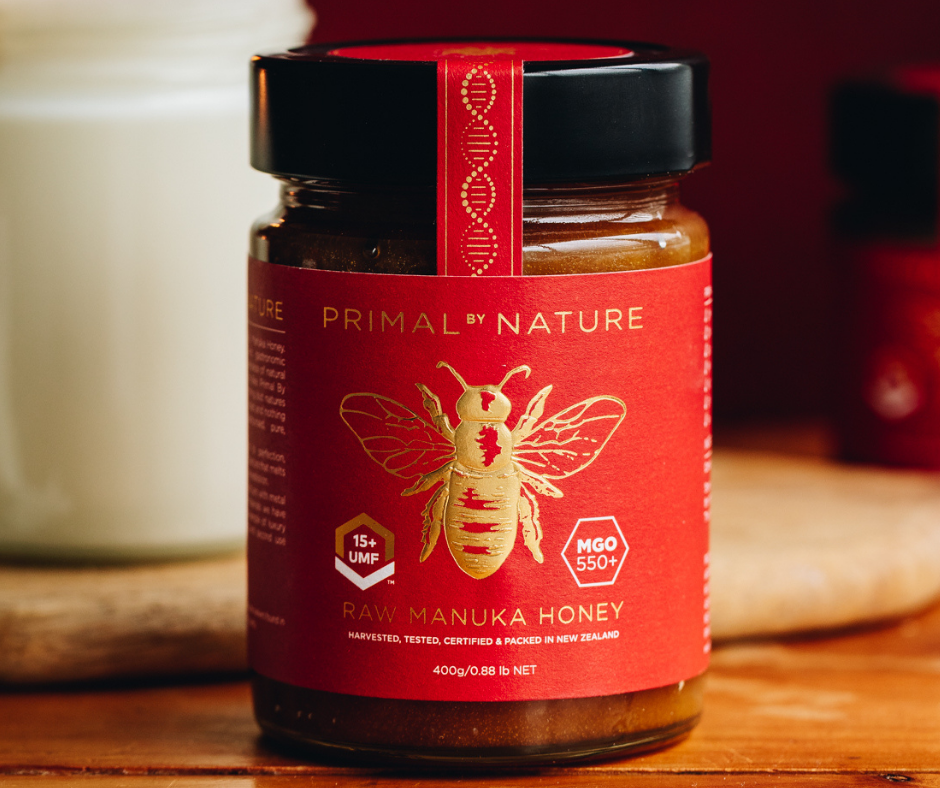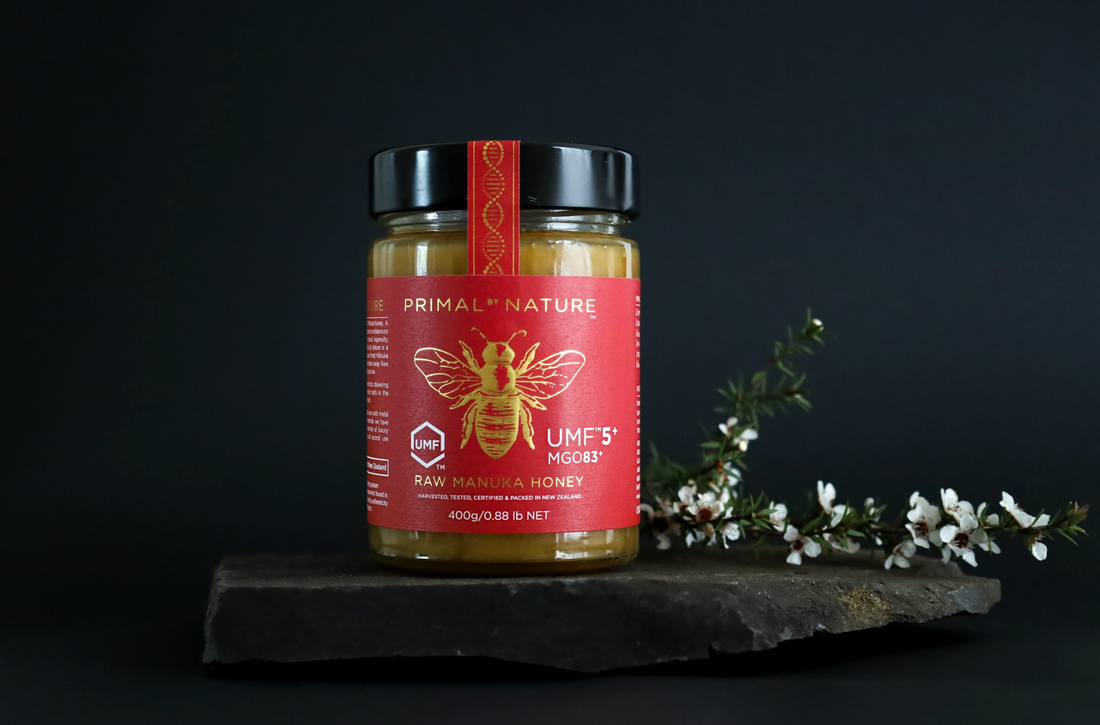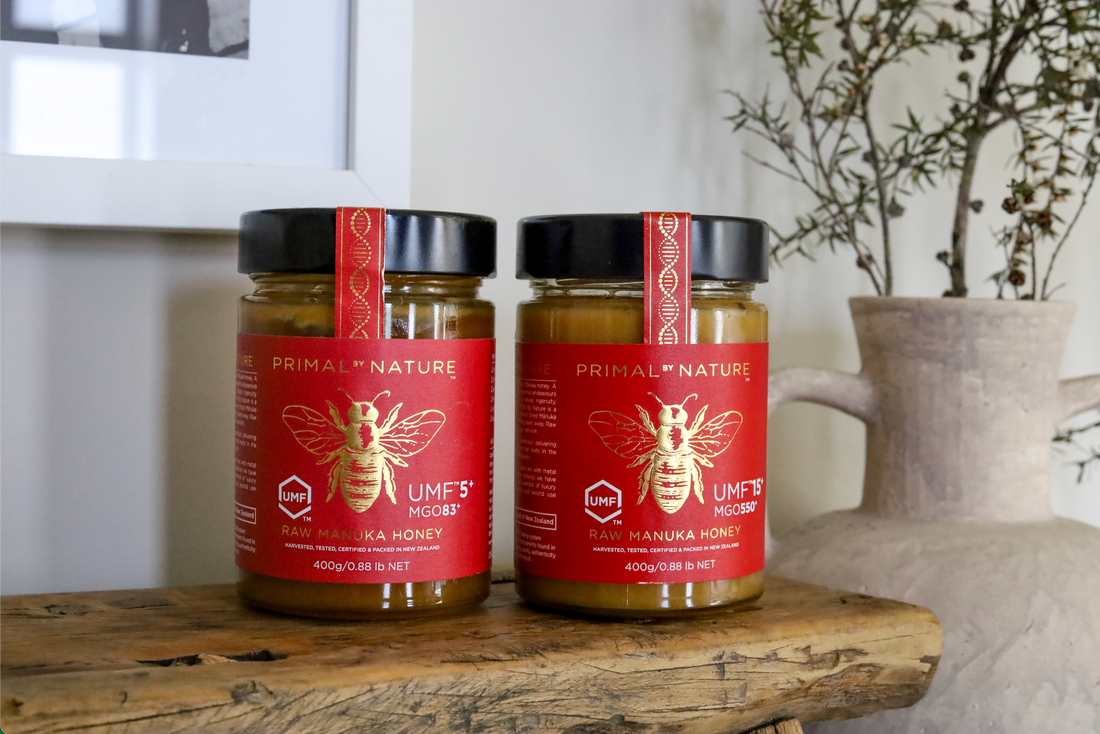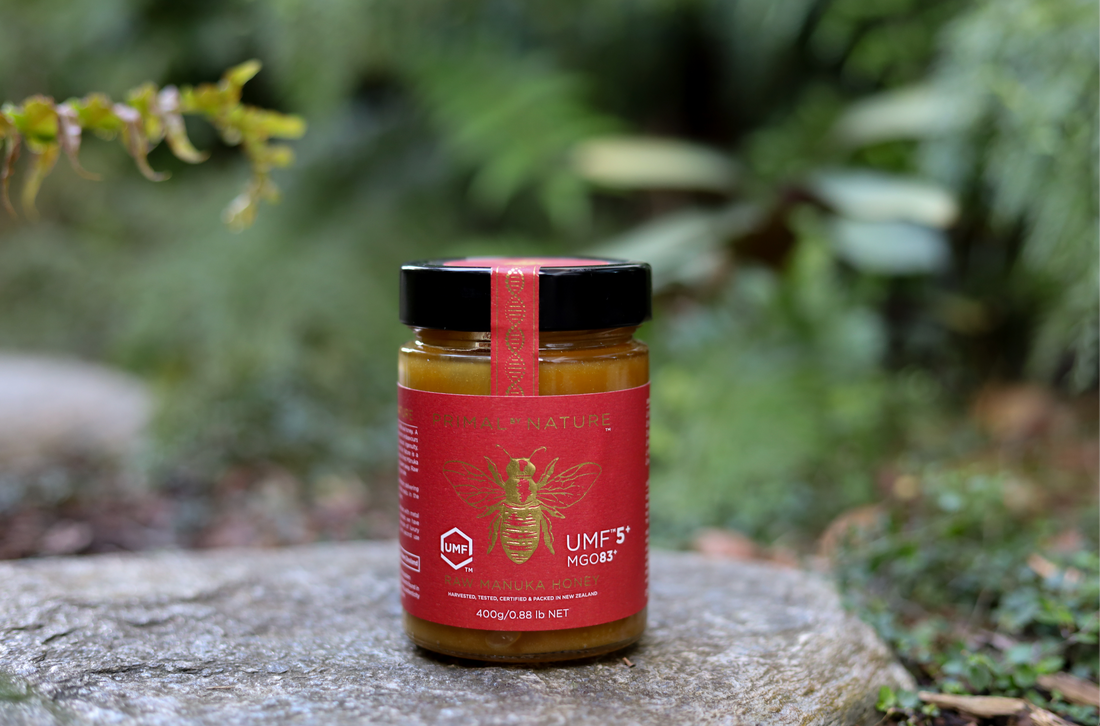Whether you’ve just been introduced to raw monofloral Manuka honey or have been a fan for a while, it’s essential to make sure you know what to look out for. The strength of your desired Manuka honey may be mild (or multifloral), or you may be looking for a very premium selection.
This blog will outline how to interpret the different measurements on a Manuka honey label and what this means for you. From MGO, to UMF™, to monofloral or mutifloral - after this article, you’ll have a much better idea of finding the best primal and pure Manuka honey for you.
Does It Say It Was Made In New Zealand?
Perhaps the most crucial feature of any jar of raw Manuka honey is its origin. Was it made in New Zealand? Considering Manuka honey is derived from the native plant, Manuka, displaying these words will indicate that this is sourced from New Zealand.
Reputable Manuka honey brands will include the silver fern icon of “Made in New Zealand” to make the verification easier to find. This logo is very easy to spot and will typically be on the front or back of the product. This certification verifies that this product is genuine to New Zealand, along with an identity number.
What Does ‘Monofloral’ or ‘Multifloral’ Mean?
After ensuring that the product you’re considering is made in New Zealand, you’ll want to be aware of the two main varieties of Manuka honey. Multifloral and monofloral. Essentially, monofloral Manuka honey refers to honey that mainly originates from the nectar of the Manuka flower - if not entirely.
Experienced apiarists and honey artisans create unique environments to ensure that monofloral Manuka honey is produced. This is a favoured variation because it will likely contain a higher concentration of the unique properties commonly found within Manuka honey.
Conversely, multifloral Manuka honey is produced with substantially less Manuka nectar present. Although the New Zealand government sets minimum concentrations to call it “monofloral”, the concentration for multi-floral does not have to be nearly as high. Many will enjoy multifloral Manuka honey as it still has a delicious creamy taste with a luxurious velvet texture. Finally, the multifloral variety will still contain smaller amounts of these unique ingredients.
What Does ‘MGO’ Mean?
MGO or methylglyoxal is one of the unique ingredients within Manuka honey that makes it so special. When biochemist Peter Molan first studied Manuka honey in 1980, he observed interesting activity.
Molan’s studies have been suggested to show that MGO has antibacterial properties. Although MGO is commonly found in honey across the world, the concentration of MGO within Manuka honey has been reported to be higher than in regular honey.
When you see MGO on the Manuka honey label, it will typically have a number, e.g. MGO 80+. This number would mean that this honey contains 80mg/kg of MGO. As a rule of thumb, many have suggested that the higher the concentration of MGO, the increased concentration of the unique properties. Typically speaking, a Manuka honey with a higher level of MGO will come at a more premium price due to its enriched composition.
What Does ‘UMF™’ Mean?
UMF or ‘Unique Manuka Factor’ is the term given to a unit of measurement for grading Manuka honey. For the past 25 years, this association has granted Manuka honey companies certifications if they follow strict criteria with their Manuka honey.
The UMF Honey Association (UMFHA) will give grades between UMF 5+ to UMF 32+. The number or grade that one receives is based on the concentration of the following bioactive chemicals:
- MGO - for potency
- Leptosperin - for authenticity
- Dihydroxyacetone (DHA) - for shelf life
- Hydroxymethylfurfural (HMF) - for freshness
To achieve a certain grade, each one of the above biochemicals must reach a minimum concentration. Many across the world are only concerned about the UMF number as this is considered to be the gold standard of pure monofloral Manuka honey.
Primal by Nature - Sustainably Providing 100% Pure New Zealand Manuka Honey
Primal By Nature is exceptionally proud to provide the world with Manuka honey that ticks all of the boxes above. As a sustainable and natural provider of raw, primal Manuka honey - we offer UMF-certified Manuka honey that you can be proud of. Our Manuka honey comes in a range of UMF™ strengths.
All Primal by Nature Manuka honey arrives at your door in recyclable glass jars regardless of the level of MGO or UMF™. We believe that our pure New Zealand Manuka honey must be the best in every respect and should be available to consumers in the same eco-friendly packaging.
Primal by Nature eliminates the confusion surrounding Manuka honey UMF™ grading systems and standards. As a result, you will be made aware of what the different grades represent and be confident in buying a product that reflects an environmentally conscious brand.
Taking Manuka honey to the next level, every glass jar of Primal by Nature contains a potent primal burst of nature. To taste Manuka honey of this stature is to embrace nature itself. So take a look at our extensive selection of Manuka honey products and become one with nature.





